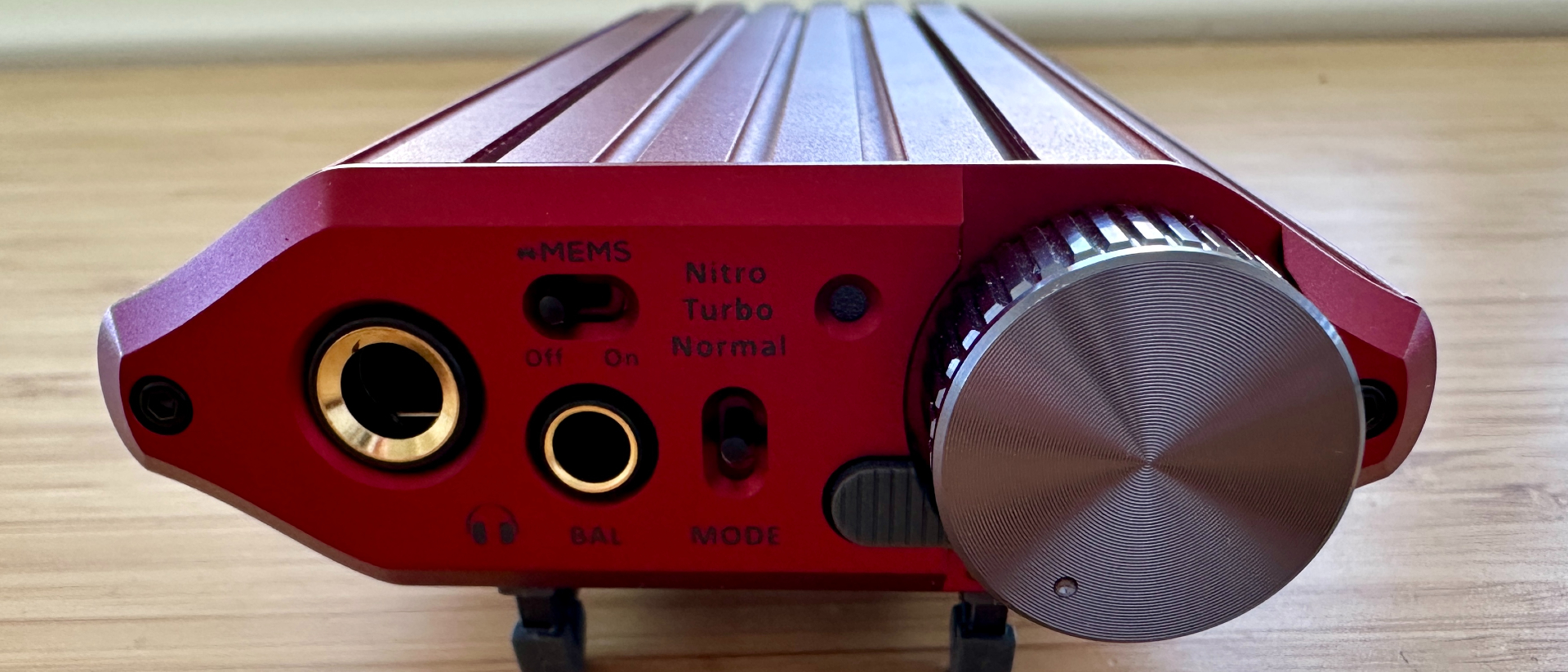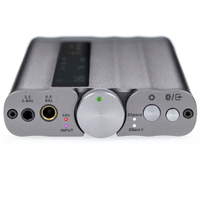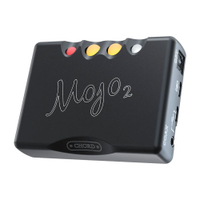TechRadar Verdict
When pushed to its fullest specification, the iFi iDSD Diablo 2 is a very impressive DAC and headphone amp indeed. It’s a vividly detailed and balanced listen, handling complicated mixes with a skilled hand. It's also able to extract every last ounce of information from your digital audio files with apparent ease. Some may yearn for greater low-frequency impact, others may note that the iDSD Diablo 2 lacks just a fraction of dynamic headroom. Despite this, the iFi is an impressive proposition and one that will take some trouncing when placed at the top of your most-wanted list.
Pros
- +
Positive, eloquent sound from all sources
- +
Extensive specification
- +
Classy build and finish
Cons
- -
Doesn’t enjoy ‘brighter’ headphones
- -
Not as dynamically nuanced as it might be
- -
Some unhelpfully short cables
Why you can trust TechRadar
iFi iDSD Diablo 2: Two-minute review
There’s an iFi headphone amp/DAC at every price-point – but there was a strong case to be made for the original iDSD Diablo being the most cost-effective of the lot. So the iDSD Diablo 2 has a lot to live up to if it wants to become one of the best portable DACs around…
The design is tidier and more thoughtful than before. Specification has moved on a little, too, thanks to new facilities with Bluetooth 5.4 and xMEMS headphones. What hasn’t changed, though, is the iFi’s need to be paired with similarly upmarket headphones in order to do its thing to its full potential.
It’s worth it, though, because when partnered with some of the best wired headphones in the business, its 'full potential' is very impressive indeed. It’s a rapid, fully detailed and nicely balanced listen, able to organise a soundstage or a complicated mix until these sound as natural as can be. It communicates fluently, controls rhythms and tempos well, and can extract every scrap of information from your digital audio files without apparent effort.
Some listeners will hanker after greater low-frequency impact, and others (or maybe the same ones) will recognise that the iDSD Diablo 2 could have greater dynamic headroom. Despite this, though, the iFi is an admirable device and one that will take some shifting from very near the top of your wish-list.
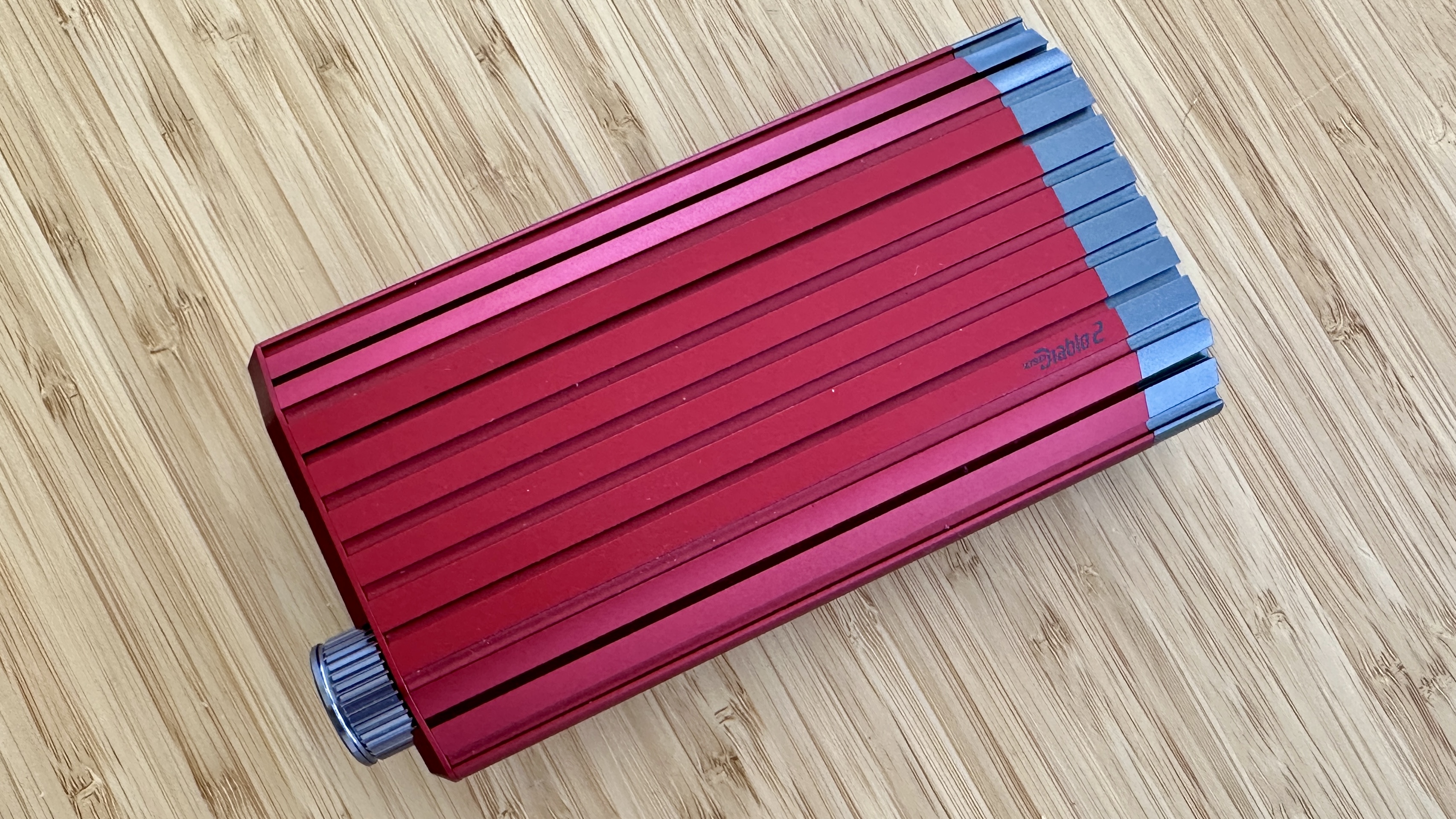
iFi iDSD Diablo 2 review: Price and release date
- Release date: November 2023
- Price: $1,299 / £1,299 / AU$2,199
The iFi iDSD Diablo 2 is on sale now, and in the United Kingdom it sells for £1,299. In America you’ll have to part with an only slightly more palatable $1,299, while in Australia it’ll set you back AU$2,199.
No matter where you’re shopping, this is serious money for a piece of desktop equipment.
iFi iDSD Diablo 2 review: Features
- Balanced and unbalanced outputs
- Dual-core Burr Brown DAC chipset
- Bluetooth 5.4 with aptX Lossless compatibility
Both the price-point and iFi’s sense of itself within the market insist that the iDSD Diablo 2 be exhaustively specified, groaning under the weight of its list of features. And so it proves.
It’s not an especially small device, the iDSD Diablo 2, but nevertheless each end is crammed with connections and controls. At the front, there are 6.3mm unbalanced and 4.4mm balanced outputs – the latter is recommended for use with xMEMS solid state driver headphones, and there’s a switch directly above it to let the iFi know if it’s connected to xMEMS headphones or not. A three-position switch allows you to select a power mode – ‘normal’, ‘turbo’ and ‘nitro’ are available, and these are very excitable ways of describing the additional power output that might be required to drive headphones of particular sensitivity. An LED lets you know what’s going on as regards file type and size (if you’ve made a wired connection) or codec type (if you’re using Bluetooth). A relatively large analogue volume control (with sliding lock) completes the front fascia line-up.
The rear panel, meanwhile, features a button to initiate Bluetooth pairing (the iFi has Bluetooth 5.4 on board, and is compatible with every codec from SBC and AAC to LDAC and aptX Lossless – although, as we shall see, getting confirmation that you’re streaming aptX Lossless is considerably more of a palaver than it should be). There’s also a 4.4mm balanced line-level input, and a hybrid 3.5mm input for either optical or coaxial digital information. Two USB-C sockets complete the set – one if for connection to mains power or to charge the internal battery, and the other is for data transfer. This last is a big improvement on the original iDSD Diablo, which required an infernal (pun very much intended) arrangement of USB extension cables to make a connection. Although received wisdom says the battery is the cleaner and more effective way to power the Diablo 2, iFi also provides its iPower 2 power supply – it’s claimed to be ten times quieter than regular mains power supplies.
On the bottom of the chassis there’s a ‘IEMatch’ switch for use with in-ear monitors – the available positions are ‘4.4’, ‘6.35’ and off.
On the inside, the iDSD Diablo 2 is fitted with a dual-core Burr Brown digital-to-analogue chipset, providing support for digital audio files of every worthwhile type up to 768kHz and DSD512 as well as full MQA decoding. iFi has allied this formidable processing power to features it calls (with typical understatement) ‘PureWave’ (balanced dual-mono analogue amplification architecture), ‘Servoless DirectDrive’ (as direct and uncorrupted a signal path as possible) and ‘OptimaLoop’ (minimisation of distortion and phase sound).
iFi suggests the iDSD Diablo 2 has an enormous five-watt output, which would be more than enough to drive even the most recalcitrant headphones without any of the gain intervention options iFi supplies. Like so much in life, though, iFi’s claims for the power that’s on tap here are the subject of some debate. These five watts are a peak power measurement, rather than RMS continuous power – and iFi’s measurement window is not open for as long as is standard around the wider industry. Still, at this point the argument is academic – the way the Diablo 2 performs will dictate whether or not we should all get hung up on power ratings…
Features score: 5 / 5
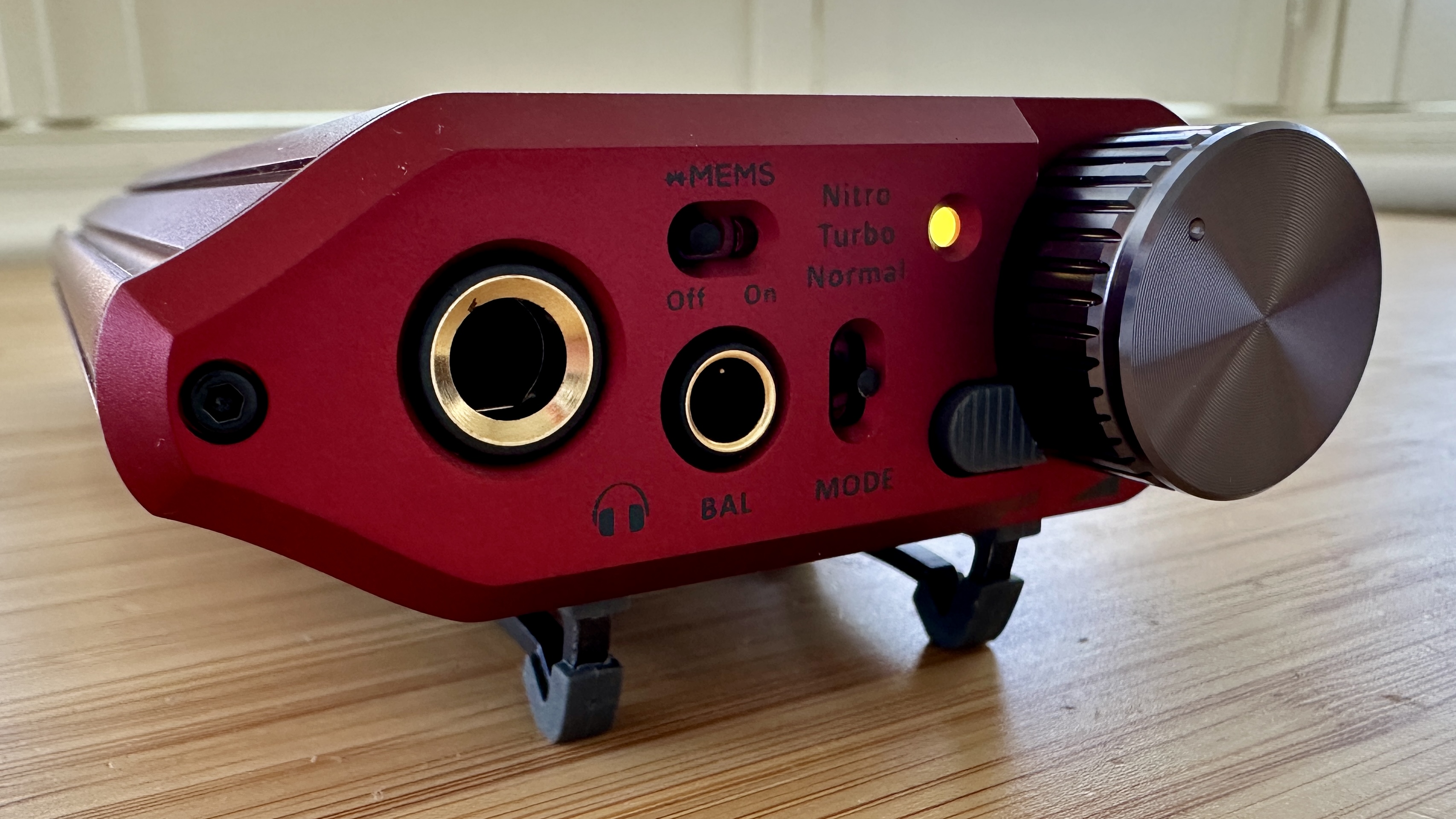
iFi iDSD Diablo 2 review: Design
- 29 x 85 x 166mm (HxWxD)
- 455g
- Multiple positioning options
In absolute terms, the iDSD Diablo 2 isn’t an especially large device, but at 29 x 85 x 166mm (HxWxD) it still takes up valuable desktop space. So iFi has wisely made positioning it as flexible as possible, thanks to a reworked chassis that replaces the original Diablo’s smooth casework with an arrangement of 22 ‘rails’ that help cooling. Eight of these rails can each accept one of the four ‘wings’ supplied with the product, which allows it to be positioned either vertically or horizontally.
As well as these supporting ‘wings’, the iDSD Diablo 2 also comes with the iPower 2 power supply, short and long(er) USB-C cables, short USB-C / Lightning cable, USB-C / USB-A adapter, Toslink optical adapter and a 3.5mm / 6.3mm headphone adapter. It’s also supplied with an ‘iTraveller’ soft carrying case, into which almost all of these accessories will fit without problems.
Design score: 4.5 / 5
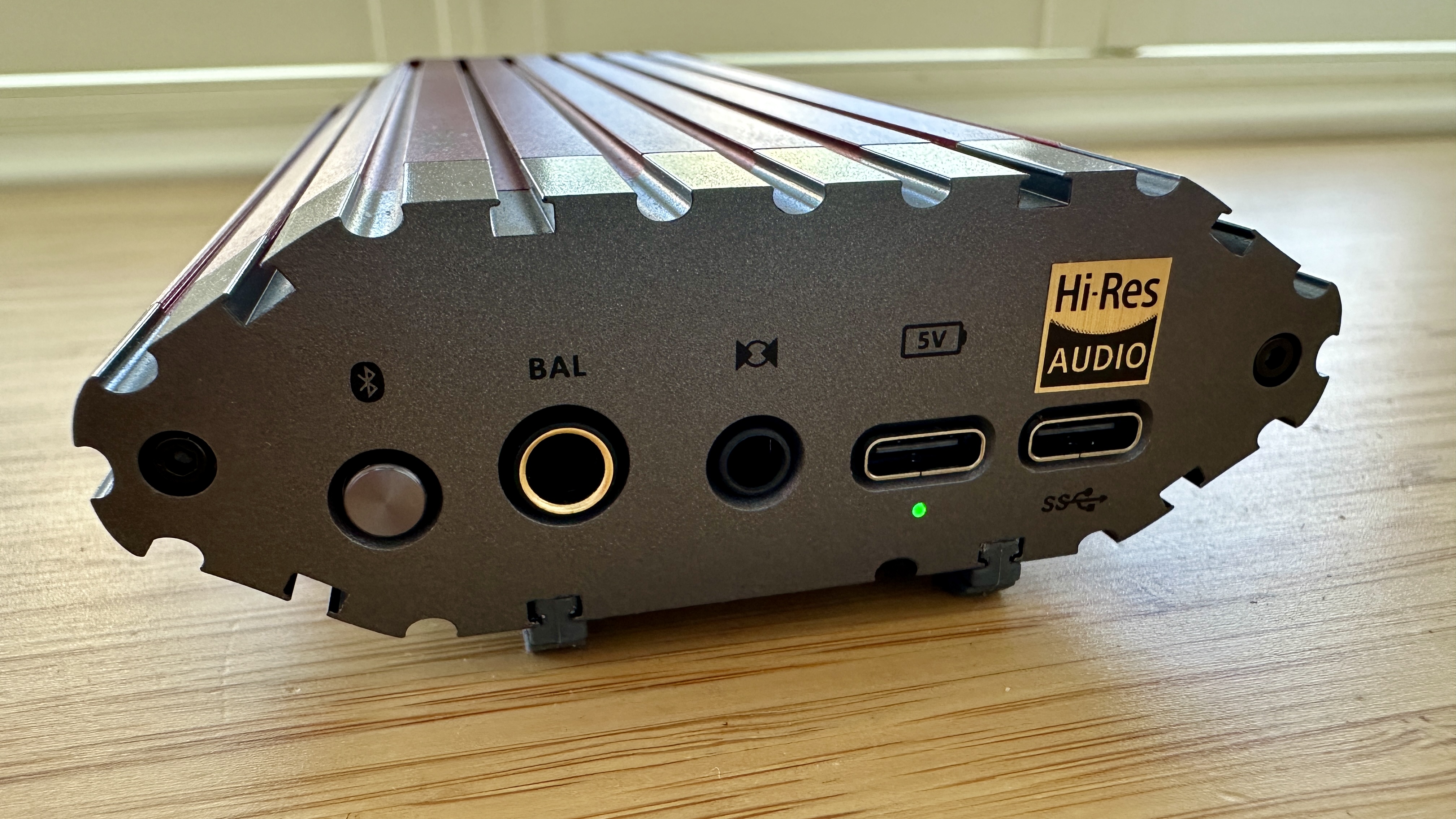
iFi iDSD Diablo 2 review: Sound quality
- Direct, unequivocal performance
- Detailed, quite lean sound
- Could conceivably be more dynamic
A desktop device like this requires a desktop, so the iDSD Diablo 2 is connected via USB-C to an Apple MacBook Pro (2020) running Colibri software in order to deliver properly high-resolution digital audio files. It’s connected to several pairs of headphones – the majority of this testing is conducted using Sennheiser IE900 in-ear monitors and a pair of Austrian Audio ‘The Composer’ over-ears, both using their 4.4mm cable. For the sake of good form, both iOS and Android smartphones are used to check out the iFi’s Bluetooth capability, too.
But it’s safe to say that no matter the headphones or the source device, or in fact the sort of music that’s on the go (and my testing includes everything from 16bit/44.1kHz files of Doris Troy’s What-cha Gonna Do About It and Lambchop’s The Daily Growl to a 24bit/192kHz file of David Bowie’s Be My Wife and a DSD64 copy of Stevie Wonder’s Living for the City), the attitude and character of the iDSD Diablo 2 doesn’t really alter all that much. This is a swift, articulate and detailed listen, with the sort of muscle-mass of a distance runner and similar manoeuvrability. If you came for vaulting dynamism and/or overtly stocky low frequencies, you might want to look elsewhere. Everyone else, though, should listen long and hard…
At every turn, the iFi keeps a close eye on the fine details and the broad strokes, and manages to put every element of a recording into proper context. It travels from the bottom of the frequency range to the top in a smoothly convincing manner, and is able to generate a genuine sense of unity and ‘performance’ from a recording. It’s possible to tilt its frequency response just slightly towards the top end if you use unsympathetic headphones, but in almost every circumstance the iDSD Diablo 2 is a confident, balanced listen.
It creates a big, open soundstage and organises it well. It’s able to find space for the most transient aspects of a recording even in the busiest mixes, keeps every element of it at arm’s length from the others in order for it to have the necessary space to express itself - and yet ties it all together almost effortlessly. It’s almost fanatical in its attention to the small harmonic variations that lesser amplifiers are happy to overlook.
Control of the lowest frequencies is absolute – and the alacrity of their attack and decay means the iFi gives good expression to rhythms. There’s a lack of bulk or substance to the bottom end it produces, though – there’s no shortage of bass extension, but there’s not a huge amount of weight to the low end, and the iDSD Diablo 2 can sound relatively lightweight as a result. When it comes to the biggest dynamic shifts in volume or intensity, it doesn’t seem to have all that much reach either – possibly because this is a very loud amplifier even when it’s playing quietly.
For all of its gain and sensitivity controls, the iFi sounds like it’s giving you everything it’s got right from the off – which just doesn’t leave it much headroom when the going gets louder still.
Sound quality score: 4.5 / 5
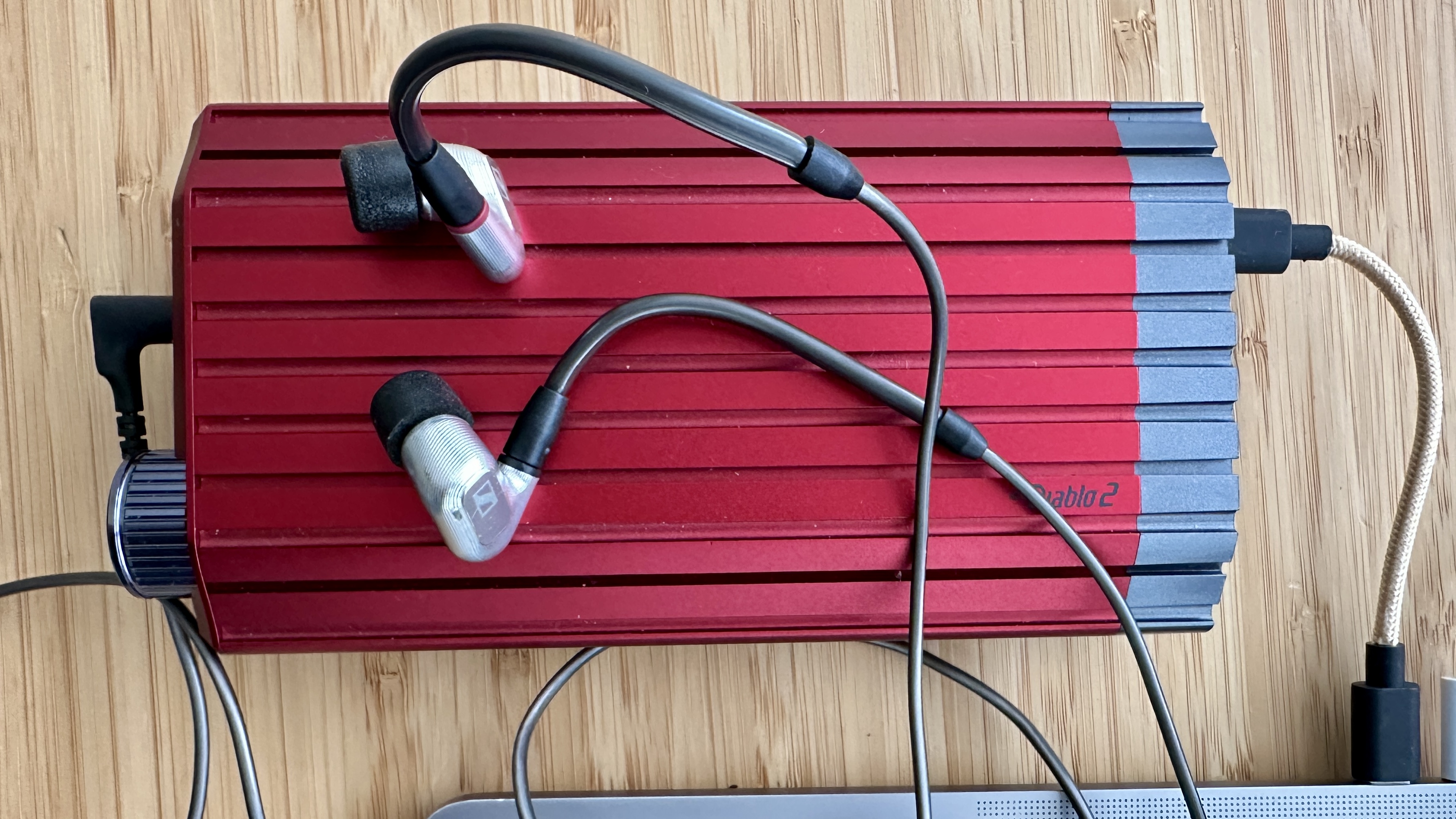
iFi iDSD Diablo 2 review: Usability & setup
- Simple to operate
- Some mild Bluetooth weirdness
- Short cables can be an issue
On a fundamental level, the iDSD Diablo 2 is a piece of cake to operate. Its controls are all physical, its volume dial operates at well-judged increments and the volume dial lock is a nice touch too. If you can plug a source of music and pair of headphones in, you’re in business.
The length of cables supplied are a minor irritation, though. To connect my MacBook Pro (2020) to the iFi, the USB-C / USB-C is required – but the braided cable is so short that there’s next-to-no ability to adjust its position on the desk. I have numerous USB-C / USB-C cables of various lengths in my home, I’ll admit, and iFi supplies a more useful length of much less impressive quality – but I can’t imagine it would carve into iFi’s profit margin too much to supply a braided cable, say, twice as long as this one.
Both my iOS and my Android smartphones see, and pair with, the iDSD Diablo 2 quickly enough. Once the connection is made, the LED on the iFi’s fascia glows yellow to indicate the AAC codec – because that’s iPhones for you. But an Asus smartphone gives every impression of streaming aptX Adaptive (green LED) even though it’s able to deal with aptX Lossless (white LED).
Usability & setup score: 4/5
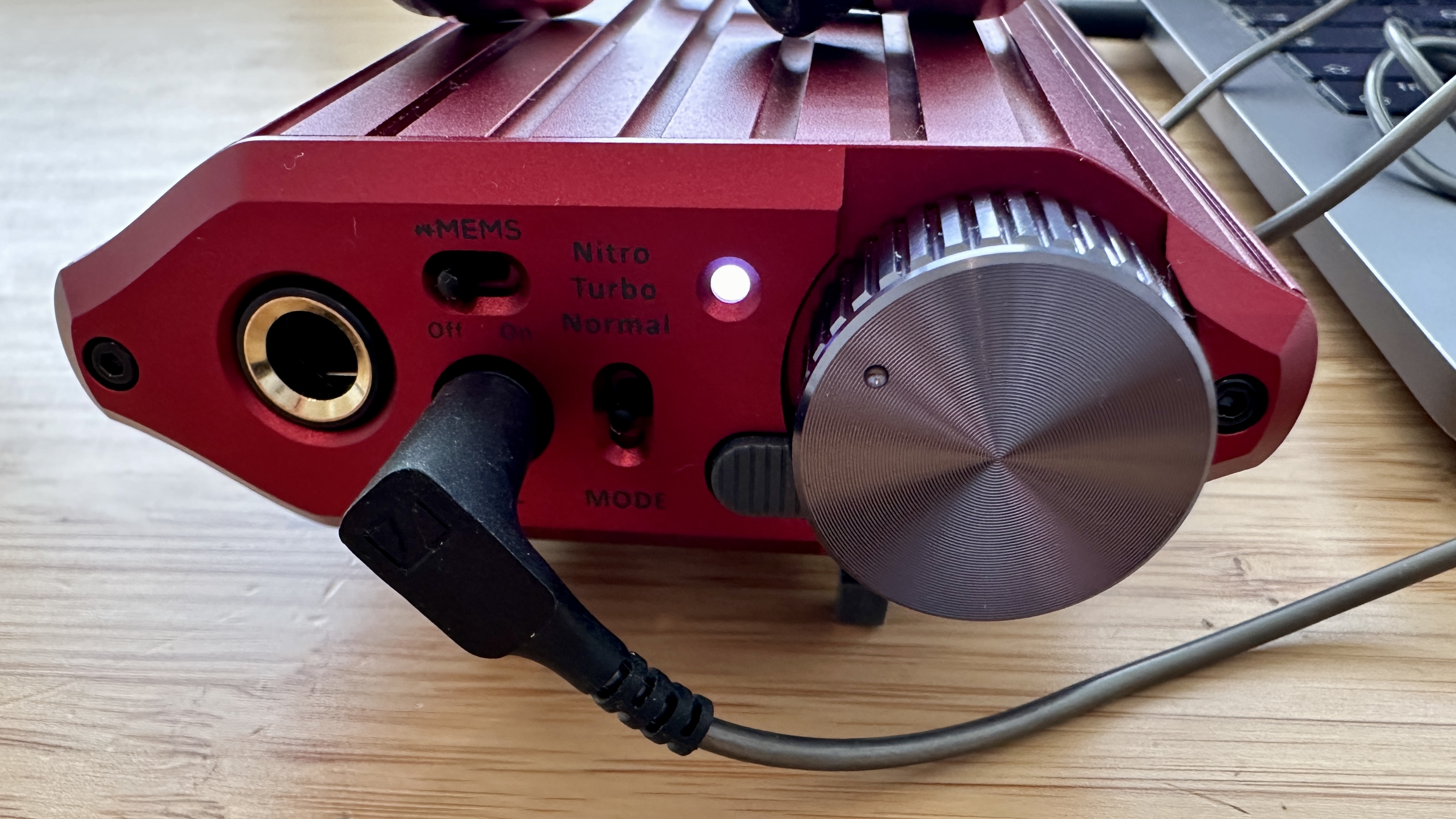
iFi iDSD Diablo 2 review: Value
It’s nigh-on impossible to suggest the iFi iDSD Diablo 2 isn’t a profound improvement on the sound to be achieved by plugging your headphones directly into a smartphone, say, or a laptop.
As a desktop audio device, then, it makes a lot of sense if you’re the sort of person who takes listening this way seriously enough to have invested in capable headphones and a lot of high-resolution digital audio files. For ‘casual’ or ‘recreational’ listeners, though, a device that demands such equally accomplished (and correspondingly expensive) partnering equipment has to be considered overkill.
Value score: 4/5
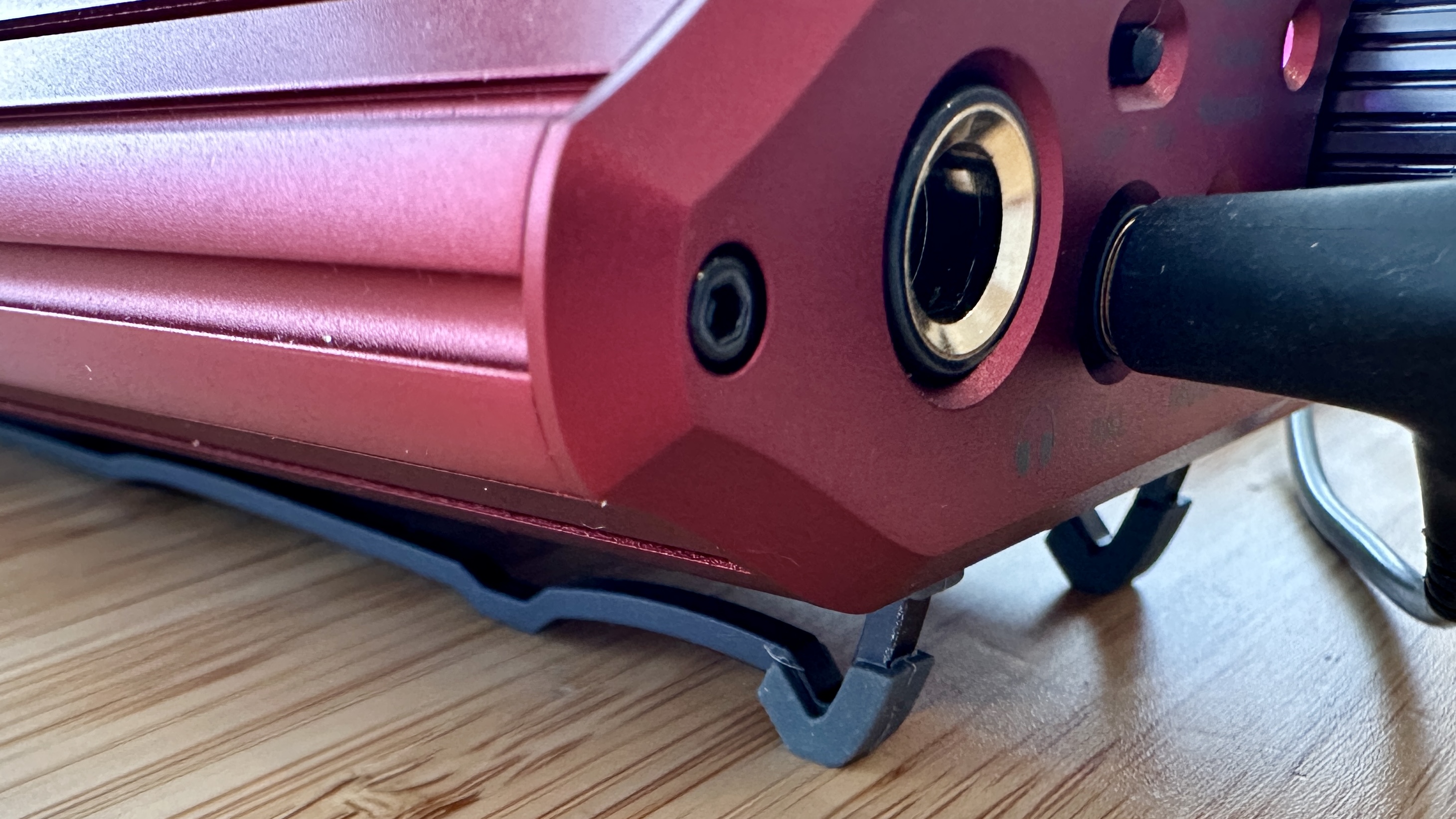
Should you buy iFi iDSD Diablo 2?
Buy it if...
You take desktop listening very seriously indeed
Surely, this is the only way to justify this kind of outlay…
You own some very capable headphones
If you want to ear exactly what the iDSD Diablo 2 is capable of, you’ll need the headphones to do it justice.
You like neutral, yet direct, audio quality
The iFi doesn’t stick its oar in too far where sound is concerned, but it’s a positive and eloquent listen.
Don't buy it if...
You enjoy a dynamic, punchy sound above all else
The iFi isn’t especially short of dynamism, and it’s prepared to roll its sleeves up with bassy music – but these are not its primary talents
You’re excited by the prospect of aptX Lossless
Are you listening to aptX Adaptive or aptX Lossless? Who can say? Certainly not the iDSD Diablo 2…
iFi iDSD Diablo 2 review: Also consider
iFi xDSD Gryphon
As with iFi's more affordable hip-dac 3, there's a strong suggestion of the hip flask to this DAC. It's a fair bit cheaper than the iDSD Diablo 2 (and a few years older) but it's popularity is proof that it's still a winner – if you can put up with the rather unhelpful user interface.
Read our in-depth iFi xDSD Gryphon review to learn more
Chord Electronics Mojo 2
A little on the large side (and a little warm after an hour or so) to be considered portable, no wireless connectivity, and an interface that leaves a little to be desired – but the Mojo 2 most definitely has it in the sound department.
Read our full Chord Electronics Mojo 2 review
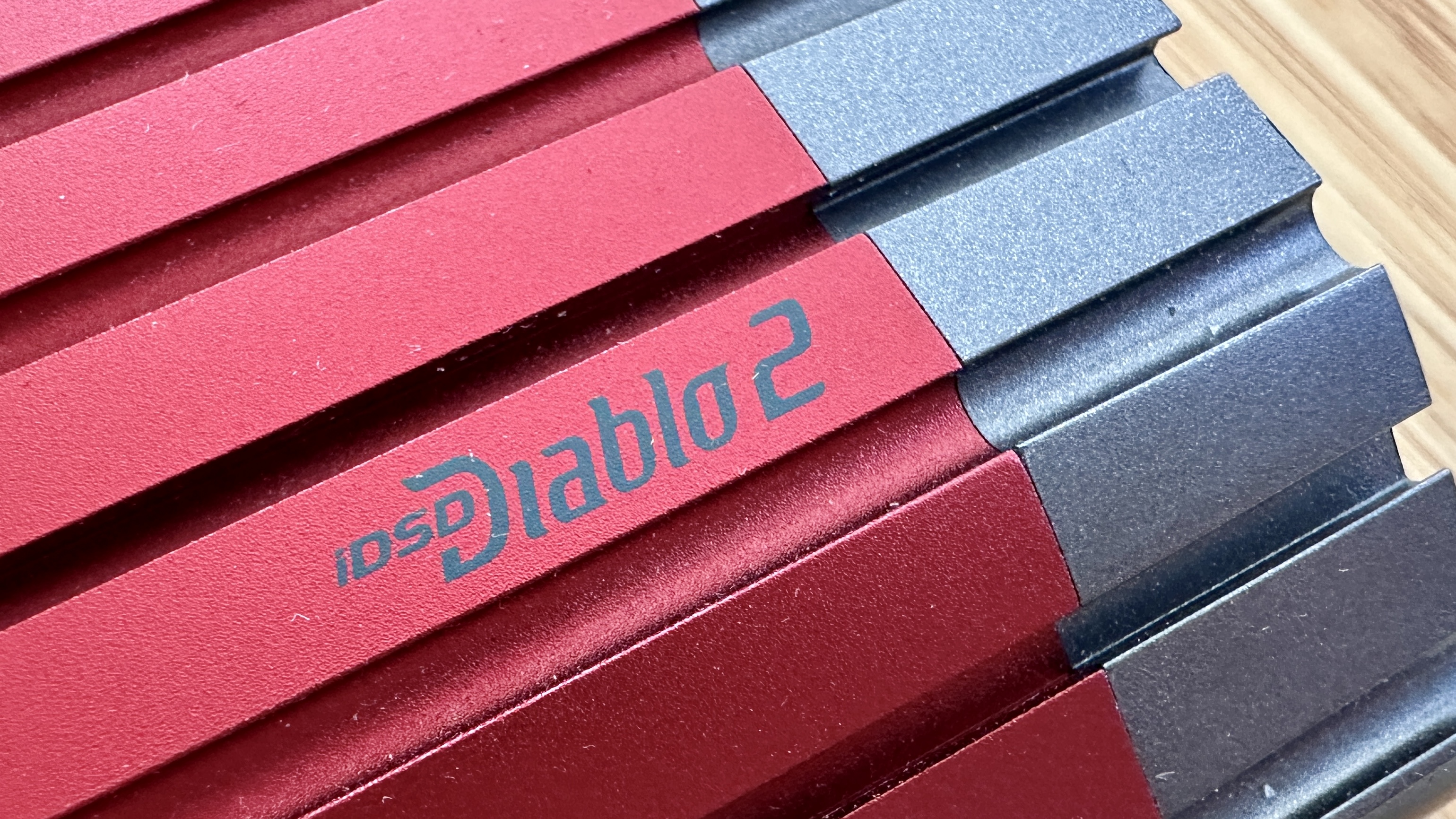
How I tested the iFi iDSD Diablo 2 review:
- Various headphones
- Various audio file types and sizes
- Various sources of music
For an almost-unbroken week, the iFi iDSD Diablo 2 sat next to my laptop, and played music either from the machine’s memory (using a wired connection) or from one of a few smartphones (using Bluetooth). Music stored as MP3, FLAC and DSD files was used, and headphones from ‘moderately pricey’ to ‘extremely expensive’ were plugged into both the balanced and unbalanced outputs…
First reviewed April 2024
Simon Lucas is a senior editorial professional with deep experience of print/digital publishing and the consumer electronics landscape. Based in Brighton, Simon worked at TechRadar's sister site What HiFi? for a number of years, as both a features editor and a digital editor, before embarking on a career in freelance consultancy, content creation, and journalism for some of the biggest brands and publications in the world.
With enormous expertise in all things home entertainment, Simon reviews everything from turntables to soundbars for TechRadar, and also likes to dip his toes into longform features and buying guides. His bylines include GQ, The Guardian, Hi-Fi+, Metro, The Observer, Pocket Lint, Shortlist, Stuff T3, Tom's Guide, Trusted Reviews, and more.
